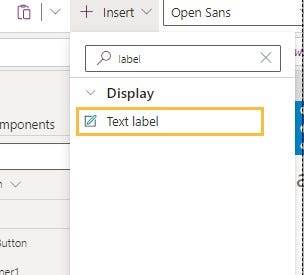#Power Platform Developers
Explore tagged Tumblr posts
Text
Expert Power Platform Services | Navignite LLP

Looking to streamline your business processes with custom applications? With over 10 years of extensive experience, our agency specializes in delivering top-notch Power Apps services that transform the way you operate. We harness the full potential of the Microsoft Power Platform to create solutions that are tailored to your unique needs.
Our Services Include:
Custom Power Apps Development: Building bespoke applications to address your specific business challenges.
Workflow Automation with Power Automate: Enhancing efficiency through automated workflows and processes.
Integration with Microsoft Suite: Seamless connectivity with SharePoint, Dynamics 365, Power BI, and other Microsoft tools.
Third-Party Integrations: Expertise in integrating Xero, QuickBooks, MYOB, and other external systems.
Data Migration & Management: Secure and efficient data handling using tools like XRM Toolbox.
Maintenance & Support: Ongoing support to ensure your applications run smoothly and effectively.
Our decade-long experience includes working with technologies like Azure Functions, Custom Web Services, and SQL Server, ensuring that we deliver robust and scalable solutions.
Why Choose Us?
Proven Expertise: Over 10 years of experience in Microsoft Dynamics CRM and Power Platform.
Tailored Solutions: Customized services that align with your business goals.
Comprehensive Skill Set: Proficient in plugin development, workflow management, and client-side scripting.
Client-Centric Approach: Dedicated to improving your productivity and simplifying tasks.
Boost your productivity and drive innovation with our expert Power Apps solutions.
Contact us today to elevate your business to the next level!
#artificial intelligence#power platform#microsoft power apps#microsoft power platform#powerplatform#power platform developers#microsoft power platform developer#msft power platform#dynamics 365 platform
2 notes
·
View notes
Text
#GTA:MagicKingdomDisney






Game Development Overview:
Title: GTA: The Magic Kingdom Platform: PlayStation 7 Developer: Rockstar Games in collaboration with DearDearestBrands Genre: Open-world Action/Adventure
Storyline:
In GTA: The Magic Kingdom, players explore a dark, reimagined version of Disney's iconic Magic Kingdom. The world is divided into themed lands, each with its own rules and factions. At its core, the story follows a criminal protagonist who is embroiled in a high-stakes battle for power and survival within the kingdom's chaotic, secretive underworld.
The protagonist (you) is a mysterious figure drawn into the Magic Kingdom's politics, where a sinister force is using the enchantment of Disney’s original lands for darker purposes. The hunt for Bambi, who is rumored to possess extraordinary powers tied to the kingdom’s survival, becomes a central pursuit, while the player navigates treacherous alliances, heists, and confrontations.
Main Character:

Name: Maximus Dark (or choose your own name) Backstory: A former magic thief, Maximus was exiled from the underworld for crossing a powerful figure. Now, forced to work in the Magic Kingdom's black market, he must hunt down Bambi and unlock secrets from deep within the kingdom's enchanted areas. Maximus has a personal vendetta against the kingdom’s rulers, who wronged him in his past. Throughout the game, the player will uncover the protagonist’s lost memories and long-forgotten connection to the forest kingdom that Bambi hails from.
Motivation: Maximus's primary goal is to reclaim his lost power, discover the truth behind Bambi’s existence, and stop a powerful corporation that seeks to rewrite the very essence of the Magic Kingdom. As the story unfolds, Maximus will face moral dilemmas, where every choice shapes the fate of the kingdom and his own soul.
Supporting Characters:

Bambi - The elusive and powerful figure whose very presence is tied to the survival of the kingdom. Bambi is the key to restoring balance but is hunted by those who wish to harness their power for dark purposes. They are often seen as a mystical being, guiding the protagonist toward their true destiny.
Claire Jorif Valentine – An enigmatic leader of a rebel faction, Claire operates in the shadows, challenging the corrupt rulers of the kingdom. She provides Maximus with missions, allies, and sometimes betrays him to further her hidden agenda. A powerful figure in the underworld, she seems to know more about Bambi than she lets on.
The Enchanted Guardians – These figures protect each themed land within the Magic Kingdom. They could either be allies or enemies depending on how the player approaches them. The Guardians are immortal beings who represent the natural forces of the kingdom—ranging from corrupted versions of iconic Disney characters like Captain Hook, Maleficent, or the Queen of Hearts.
Tiger Lily – A key ally who once helped Bambi and holds secrets to unlocking the magical energies in the kingdom. She is on a quest to stop the dark forces from taking over the kingdom. As a supporting character, she aids in quests related to nature and magic and can unlock special abilities for the player.
Walt - A mysterious figure who seems to control the Magic Kingdom’s darkest secrets. He appears to have been a creator of both the magic and the corruption that now threatens the lands. Maximus will need to confront him as the story builds toward the final confrontation.
Gameplay:
Open-World Exploration: The game world is split into different magical lands, such as Adventureland, Fantasyland, Tomorrowland, and others. Each land offers unique challenges, missions, and enemies. Players can freely explore these areas and engage in side missions while unraveling the main story.
Combat: Players can engage in both ranged and hand-to-hand combat, using magical powers, enchanted weapons, and advanced technology. The combat system is dynamic, blending traditional open-world combat with the ability to wield magic and technology.
Heist Missions: As Maximus tries to gain control of the Magic Kingdom, he must undertake heists to infiltrate high-security areas and steal vital items—such as keys to unlock magical areas or magical artifacts that help in the hunt for Bambi.
Choices & Morality: The game emphasizes player choices, with the narrative changing based on decisions. Will Maximus become a hero, villain, or something in-between? The relationship with Bambi and other characters is crucial, as decisions affect both alliances and the kingdom’s fate.
Stealth and Deception: Players can also use stealth to infiltrate the kingdom’s high-security areas or employ deception to manipulate enemies. Using disguises, magic, and technology, Maximus can change the course of battles or avoid them altogether.
Motivation of Player:
The player is constantly driven by the need for power, knowledge, and redemption. They must build their empire, uncover the dark secrets of the kingdom, and forge relationships with various characters—each with their own agendas. However, the hunt for Bambi represents more than just a physical chase; it's a quest for deeper understanding, as Bambi’s powers could either save or doom the Magic Kingdom.
Key Objectives:
Locate Bambi: The primary objective is to find Bambi before the forces of darkness do. Along the way, players uncover the mysteries of the forest kingdom and its connection to the greater magical world.
Restore the Kingdom: Players must gather allies, defeat corrupt leaders, and unlock ancient powers to restore balance to the kingdom. Each land requires the completion of key quests, often involving battles, negotiations, and solving puzzles.
Uncover Maximus’s Past: As Maximus’s memories return, the player will unlock hidden abilities and unique storylines. The past is filled with betrayal and secrets that will help guide the future of the kingdom.
End the Corruption: Maximus must dismantle the oppressive corporation that seeks to control the kingdom's magical energy. This requires sabotaging their operations, stealing key documents, and confronting their leaders in epic battles.
The Final Confrontation: In the game's climax, the player must decide whether to join Bambi in their fight for freedom or betray them to seize ultimate power. The fate of the Magic Kingdom—and possibly the world—rests in the player’s hands.
This game blends classic open-world gameplay with dark fantasy elements and a rich narrative, providing players with the chance to explore a re-imagined Disney universe full of intrigue, magic, and moral complexity. The pursuit of Bambi adds layers of mystery and suspense, making this a truly unique entry in the GTA franchise.








To project the potential success of GTA: The Magic Kingdom in 2025, we need to consider various factors including market trends, audience engagement, and the unique elements of the game. Here's a breakdown:
Market Growth for Open-World and Action-Adventure Games:
Current Trends: The gaming industry, especially for open-world games and action-adventure genres, has shown steady growth. Titles like Grand Theft Auto V, The Witcher 3, and Cyberpunk 2077 continue to drive demand for expansive worlds with immersive stories.
Projections: The global gaming market is expected to grow at a compound annual growth rate (CAGR) of around 9.5% from 2024 to 2028. As GTA: The Magic Kingdom combines elements of beloved franchises (GTA and Disney), it could tap into both established fanbases, providing a unique mix of nostalgia and innovation.
Audience Engagement and Sentiment:
Nostalgia Factor: The reimagining of Disney’s Magic Kingdom with dark and mature themes will likely engage both nostalgic fans of Disney and mature audiences looking for an alternative take on Disney. This could boost both initial sales and long-term engagement.
Fanbase Growth: By 2025, your fanbase could grow significantly as the game's story unfolds. Assuming solid marketing campaigns and collaborations with influencers or streamers, you might see a steady increase in followers and engagement leading up to and after the game’s release.
Projections: Positive sentiment is expected if the game's unique blending of fantasy, technology, and dystopian elements resonates with audiences. Projections for engagement could range from a 15-20% increase in social media mentions in the first year after release.
Technological Advances and Game Development:
PlayStation 7 and Future Hardware: Given the expected launch of PlayStation 7 around 2025, GTA: The Magic Kingdom could be designed to take full advantage of next-gen console power. This will allow for an even more immersive experience with advanced graphics, smoother gameplay, and expansive worlds.
Projections: With the integration of next-gen technologies (such as AI-driven NPCs and advanced virtual reality options), GTA: The Magic Kingdom could have a 30-40% higher player retention rate due to these enhanced features.
Sales Projections:
Market Demand: Based on trends for similar games (open-world, fantasy, and action-adventure), initial sales could range between 5-10 million copies within the first year.
Projections for 2025: The game could potentially reach 15-20 million copies sold by 2025, depending on post-launch expansions, updates, and downloadable content (DLC). A strong, loyal fanbase built from the early adoption of the game could help push this figure higher.
Expansion and Future Growth:
DLCs & Expansions: By 2025, the game could see its first major expansion, adding new zones, characters, and stories to keep players engaged.
Projections: Expansions or sequels could drive continued engagement. This could result in an additional 10-20% increase in sales in the second year post-launch, especially if the game incorporates user feedback and evolves based on community input.
Marketing and Brand Partnerships:
Brand Alignment: With ties to Disney, GTA: The Magic Kingdom could attract partnerships, cross-promotions, and collaborations with major brands.
Projections: These collaborations could increase visibility, leading to higher-than-expected sales and engagement. With a proper marketing push and potentially viral content, the game's overall reach could expand significantly, especially if there are partnerships with influencers or Disney-themed events.
Summary of Projections for 2025:
Sales: 15-20 million copies sold globally
Player Engagement: 30-40% higher retention with the introduction of new technology
Audience Growth: Significant increase in fanbase with positive sentiment and engagement, likely 20-25% growth year-over-year
Brand Partnerships and DLCs: Increased revenue from post-launch content and collaborations
Overall, with the unique blend of popular genres and the anticipated growth of gaming markets, GTA: The Magic Kingdom could be positioned for strong performance by 2025, with significant growth in both sales and player engagement.
#Game Development Overview:#Title: GTA: The Magic Kingdom#Platform: PlayStation 7#Developer: Rockstar Games in collaboration with DearDearestBrands#Genre: Open-world Action/Adventure#---#Storyline:#In GTA: The Magic Kingdom#players explore a dark#reimagined version of Disney's iconic Magic Kingdom. The world is divided into themed lands#each with its own rules and factions. At its core#the story follows a criminal protagonist who is embroiled in a high-stakes battle for power and survival within the kingdom's chaotic#secretive underworld.#The protagonist (you) is a mysterious figure drawn into the Magic Kingdom's politics#where a sinister force is using the enchantment of Disney’s original lands for darker purposes. The hunt for Bambi#who is rumored to possess extraordinary powers tied to the kingdom’s survival#becomes a central pursuit#while the player navigates treacherous alliances#heists#and confrontations.#Main Character:#Name: Maximus Dark (or choose your own name)#Backstory: A former magic thief#Maximus was exiled from the underworld for crossing a powerful figure. Now#forced to work in the Magic Kingdom's black market#he must hunt down Bambi and unlock secrets from deep within the kingdom's enchanted areas. Maximus has a personal vendetta against the king#who wronged him in his past. Throughout the game#the player will uncover the protagonist’s lost memories and long-forgotten connection to the forest kingdom that Bambi hails from.#Motivation: Maximus's primary goal is to reclaim his lost power#discover the truth behind Bambi’s existence
5 notes
·
View notes
Text
Simplify Transactions and Boost Efficiency with Our Cash Collection Application
Manual cash collection can lead to inefficiencies and increased risks for businesses. Our cash collection application provides a streamlined solution, tailored to support all business sizes in managing cash effortlessly. Key features include automated invoicing, multi-channel payment options, and comprehensive analytics, all of which simplify the payment process and enhance transparency. The application is designed with a focus on usability and security, ensuring that every transaction is traceable and error-free. With real-time insights and customizable settings, you can adapt the application to align with your business needs. Its robust reporting functions give you a bird’s eye view of financial performance, helping you make data-driven decisions. Move beyond traditional, error-prone cash handling methods and step into the future with a digital approach. With our cash collection application, optimize cash flow and enjoy better financial control at every level of your organization.
#seo agency#seo company#seo marketing#digital marketing#seo services#azure cloud services#amazon web services#ai powered application#android app development#augmented reality solutions#augmented reality in education#augmented reality (ar)#augmented reality agency#augmented reality development services#cash collection application#cloud security services#iot applications#iot#iotsolutions#iot development services#iot platform#digitaltransformation#innovation#techinnovation#iot app development services#large language model services#artificial intelligence#llm#generative ai#ai
4 notes
·
View notes
Text
Count The Rows In A Power Apps Gallery With AllItemsCount
Overview:
In this blog post, we’ll explore how to count Power Apps Gallery Rows using the AllItemsCount property. We’ll insert a label to show the count of all gallery items and then implement the exact code for precise counting. Each step comes with images and clear instructions. By the end, you’ll master the display of the total number of items in any gallery. Let’s dive in!


This code we use and count how many items in gallery
Read Full Post here: How to Count Rows in Power Apps Gallery: A Step-by-Step Guide (softwarezone365.com)
View Post On: LinkedIn: (4) Software Zone 365: Company Page Admin | LinkedIn Twitter: https://twitter.com/365_zone40741/status/1712883279580614768 Medium: Microsoft’s Power Platform Potential: Unlocking Business Impact (softwarezone365.com) Pinterest: https://www.pinterest.com/pin/1065875436793645010 Reddit: https://www.reddit.com/user/SoftwareZone365/comments/1773k2e/count_the_rows_in_a_power_apps_gallery_with/ Quora: https://www.quora.com/profile/Software-Zone-365/In-this-blog-post-we-ll-explore-how-to-count-Power-Apps-Gallery-Rows-using-the-AllItemsCount-property-We-ll-insert-a-l GitHub: Count The Rows In A Power Apps Gallery With AllItemsCount · softwarezone365/PowerApps Wiki (github.com) Instagram: https://www.instagram.com/p/CyWOuK8sGc9/ Facebook: https://m.facebook.com/story.php?story_fbid=300738072723966&id=100083633251137&mibextid=ZbWKwL
#development#AllItemsCount#App Development#BrowseGallery1#Coding in Power Apps#Gallery Items#Gallery Management#Gallery Rows#Item Counting#Label Count#Microsoft Power Apps#Power Apps#Power Apps Functions#Power Apps Gallery#Power Apps Tips#Power Apps Tutorial#Power platform#Row Counting Technique#Step-by-Step Guide#Text Property
2 notes
·
View notes
Text

Dynamics 365 ERP consulting offers businesses guidance and support in implementing, customizing, and optimizing Microsoft Dynamics 365 enterprise resource planning (ERP) software. With a focus on improving operational efficiency, financial management, and supply chain visibility, Dynamics 365 ERP consulting helps organizations streamline their business processes and make data-driven decisions. Services may include software selection, installation, training, ongoing support, and software integrations with other business systems.
#Microsoft Power Platform Consulting#Power Apps Development#Power BI Consulting#Dynamics 365 Partners
2 notes
·
View notes
Text
At the California Institute of the Arts, it all started with a videoconference between the registrar’s office and a nonprofit.
One of the nonprofit’s representatives had enabled an AI note-taking tool from Read AI. At the end of the meeting, it emailed a summary to all attendees, said Allan Chen, the institute’s chief technology officer. They could have a copy of the notes, if they wanted — they just needed to create their own account.
Next thing Chen knew, Read AI’s bot had popped up inabout a dozen of his meetings over a one-week span. It was in one-on-one check-ins. Project meetings. “Everything.”
The spread “was very aggressive,” recalled Chen, who also serves as vice president for institute technology. And it “took us by surprise.”
The scenariounderscores a growing challenge for colleges: Tech adoption and experimentation among students, faculty, and staff — especially as it pertains to AI — are outpacing institutions’ governance of these technologies and may even violate their data-privacy and security policies.
That has been the case with note-taking tools from companies including Read AI, Otter.ai, and Fireflies.ai.They can integrate with platforms like Zoom, Google Meet, and Microsoft Teamsto provide live transcriptions, meeting summaries, audio and video recordings, and other services.
Higher-ed interest in these products isn’t surprising.For those bogged down with virtual rendezvouses, a tool that can ingest long, winding conversations and spit outkey takeaways and action items is alluring. These services can also aid people with disabilities, including those who are deaf.
But the tools can quickly propagate unchecked across a university. They can auto-join any virtual meetings on a user’s calendar — even if that person is not in attendance. And that’s a concern, administrators say, if it means third-party productsthat an institution hasn’t reviewedmay be capturing and analyzing personal information, proprietary material, or confidential communications.
“What keeps me up at night is the ability for individual users to do things that are very powerful, but they don’t realize what they’re doing,” Chen said. “You may not realize you’re opening a can of worms.“
The Chronicle documented both individual and universitywide instances of this trend. At Tidewater Community College, in Virginia, Heather Brown, an instructional designer, unwittingly gave Otter.ai’s tool access to her calendar, and it joined a Faculty Senate meeting she didn’t end up attending. “One of our [associate vice presidents] reached out to inform me,” she wrote in a message. “I was mortified!”
23K notes
·
View notes
Text
Growth Warrior Capital Invests in AI Startups MenuData & Simulacra to Transform Data into Actionable Insights
New Post has been published on https://thedigitalinsider.com/growth-warrior-capital-invests-in-ai-startups-menudata-simulacra-to-transform-data-into-actionable-insights/
Growth Warrior Capital Invests in AI Startups MenuData & Simulacra to Transform Data into Actionable Insights


Silicon Valley-based Growth Warrior Capital (GWC), led by seasoned operator-turned-venture capitalist Promise Phelon, has announced two major investments into emerging AI startups MenuData and Simulacra Synthetic Data Studio. These investments precede the firm’s inaugural fund close, marking a strategic push into AI-driven consumer insights and data analytics.
GWC, alongside Brickyard, co-led a $2 million seed round into MenuData, an AI-powered platform leveraging the world’s largest proprietary dataset of menu items and ingredients to provide critical insights for the food and beverage industry. MenuData will use the funding to expand its team, accelerate product development, and pilot its technology with major brands such as Church’s Texas Chicken, Hyatt, and Dole.
Additionally, Simulacra Synthetic Data Studio secured $750K in pre-seed funding from GWC to scale customer growth and refine its AI-powered synthetic data platform. Simulacra’s proprietary technology enables real-time, high-quality synthetic data generation, allowing businesses to conduct advanced market research with greater speed and efficiency.
Revolutionizing Consumer Insights with AI
With U.S. consumer spending reaching an annualized $20.2 trillion in late 2024, businesses are under pressure to extract actionable insights from vast datasets. However, current data collection methods remain inefficient, resulting in high costs with limited returns. Recognizing these gaps, Phelon identified MenuData and Simulacra as leaders in AI-driven solutions poised to disrupt the consumer research space.
Promise Phelon, Founder and Managing Partner of GWC, said: “The Food & Beverage Big Data market is on track to hit $6.7 billion by 2030 at a staggering 35.4% CAGR, but brands still struggle to keep up with rapidly changing consumer preferences. Both MenuData and Simulacra bring next-generation AI capabilities to the table, offering precision, efficiency, and accuracy that legacy data providers simply cannot match.”
MenuData: AI-Driven Consumer Insights for Food & Beverage
MenuData is redefining how food brands, manufacturers, and distributors analyze consumer trends. Using AI-powered social listening and data aggregation, the platform predicts menu innovations, optimizes product strategies, and helps brands reduce the industry’s staggering 85% failure rate for new product launches.
The company’s AI-driven insights help manufacturers boost sales, enable operators to craft innovative recipes, and empower food distributors with targeted lead-generation tools. From identifying trending flavors to analyzing regional culinary shifts, MenuData provides real-time intelligence that allows businesses to act ahead of emerging trends.
Sunny Khamkar, CEO of MenuData, said: “GWC’s investment propels us forward in a way no other funding could. Promise’s deep operational expertise and network have been instrumental in refining our product and scaling our impact. We’re on a mission to become the go-to AI resource for food and beverage companies looking to stay ahead of evolving consumer demands.”
Simulacra: Synthetic Data for Advanced Market Research
Simulacra Synthetic Data Studio (SDS) is at the forefront of AI-driven synthetic data generation, enabling businesses to conduct predictive modeling and scenario-based research with unmatched precision. By transforming existing datasets into robust synthetic data, Simulacra allows companies to simulate consumer behavior, refine marketing strategies, and predict trends without the need for costly real-world studies.
The platform’s proprietary Conditional Generation technology ensures statistically significant, bias-free data generation, making it an indispensable tool for CPG brands, market researchers, and retailers. Co-founded by former Gastrograph AI executives Jason Cohen and Gerard Schweitzer, Simulacra is leveraging GWC’s investment to expand leadership, grow its customer base, and enhance its real-time data modeling capabilities.
Jason Cohen, Founder & CEO of Simulacra Synthetic Data Studio, said: “As seasoned founders, we value a VC partner who brings more than just capital. Promise’s network and strategic insights have already accelerated our market penetration, helping us land pilots and convert key customers. With her backing, we’re set to scale and redefine consumer data analysis.”
GWC’s Vision for AI-Powered Market Disruption
Growth Warrior Capital’s approach to venture investing is built on operational expertise and a deep understanding of industry phase changes. With Fund I, GWC aims to generate outsized returns by backing ‘dangerous’ founders—visionary entrepreneurs who are set to redefine their industries through AI-driven innovation.
Beyond capital investment, Phelon is committed to supporting underserved founders who may lack traditional venture network access. By offering hands-on guidance in strategic hiring, product roadmaps, and customer introductions, GWC is not just funding startups but actively shaping their success trajectories.
Looking ahead, GWC plans to increase its check sizes in 2025 as it continues to build momentum with its Fund I portfolio. With MenuData and Simulacra leading the charge, Phelon’s firm is poised to set a new benchmark in venture-backed AI investments, driving scalable growth and reshaping how businesses harness data to understand consumer behavior.
As AI continues to transform industries, Growth Warrior Capital is firmly positioned at the forefront—fueling groundbreaking technologies that will shape the future of consumer insights and market intelligence.
#2024#2025#ai#AI-powered#amp#Analysis#Analytics#approach#Behavior#benchmark#Bias#Big Data#billion#brands#CEO#chicken#Companies#consumer behavior#consumer data#CPG#craft#culinary#data#data analysis#data analytics#data collection#data modeling#data platform#datasets#development
0 notes
Text
Android vs iOS - Which OS is right for you?
Over the years, the debate between Android and iOS has intensified, making it vital for you to understand the unique features each operating system offers. Android provides a wide range of devices with customizable options, while iOS boasts a seamless user experience and consistent updates. Your choice can impact everything from app availability to device performance. Whether you prioritize…
#AI-powered mobile operating systems#Android benefits#Android customization options#Android features#Android flexibility vs iOS simplicity#Android market share vs iOS#Android or iOS which is better#Android vs iOS#Android vs iOS comparison#Android vs iOS for app development#Android vs iOS for gaming#Android vs iOS performance analysis#Android vs iOS security features#Android vs iOS user experience#best mobile operating system#choose between Android and iOS#choosing the right OS for developers#cross-platform app development Android vs iOS#generative AI apps on Android#generative AI apps on iOS#generative AI in mobile apps#iOS benefits#iOS exclusive features#iOS features#iOS smoothness and stability#mobile apps on Android vs iOS#mobile operating system trends#mobile OS comparison#mobile platform comparison for AI#next-gen mobile technologies comparison
1 note
·
View note
Text
Prompt Engine Commercial by Karthik Ramani Review
Prompt Engine Commercial by Karthik Ramani – Discover Why Prompt Engine Pro is the Ultimate Tool for Entrepreneurs and Creatives Prompt Engine Commercial by Karthik Ramani. When it comes to tools that simplify workflows, Prompt Engine Pro emerges as a top choice due to its seamless functionality and innovative features. Unlike conventional extensions or collections of prompts, this app works as…

View On WordPress
#affordable prompt engine commercial solution#AI powered prompt engine commercial services#best prompt engine commercial software#cloud based prompt engine commercial applications#custom prompt engine commercial development#enterprise level prompt engine commercial system#high quality prompt engine commercial tool#most effective prompt engine commercial platform#prompt engine commercial for specific industries#scalable prompt engine commercial infrastructure
0 notes
Text

Learn About The Ways To Improve Your Mobile App Performance
Learn about the ways to improve your mobile app performance. Visit the best web and mobile app development platforms to learn how to create an app with AI.
#mobile application development platforms#web and mobile app development platforms#create an app with AI#AI powered app builder
1 note
·
View note
Text
0 notes
Text
Build the Future of Gaming with Crypto Casino Development Solutions

#In a world where innovation drives the gaming industry#the rise of crypto casino game development is reshaping the way players and developers think about online gambling. This is because blockch#allowing developers and entrepreneurs to create immersive#secure#and decentralized casino experiences in unprecedented ways. This is not a trend; it's here to stay.#The Shift towards Crypto Casinos#Imagine a world that could be defined by transparency#security#and accessibility for your games. That's precisely what crypto casino game development is trying to bring to the table. Traditionally#online casinos have suffered because of trust issues and minimal choices for payment options. This changes with blockchain technology and c#Blockchain in casino games ensures that all transactions are secure#transparent#and tamper-proof. Thus#players can check how fair a game is#transfer money into and out of the account using cryptocurrencies#and maintain anonymity while playing games. It is not only technologically different but also culturally. This shift appeals to a whole new#What Makes Crypto Casino Game Development Unique?#Crypto casino game development offers features that set it apart from traditional online casinos. Let’s delve into some of these groundbrea#Decentralization and TransparencyBlockchain-powered casinos operate without centralized control#ensuring all transactions and game outcomes are verifiable on a public ledger. This transparency builds trust among players.#Enhanced SecurityWith smart contracts automating processes and blockchain technology securing transactions#crypto casinos significantly reduce the risk of hacking and fraud.#Global AccessibilityCryptocurrencies break the barriers that traditional banking systems have#making it possible for players from around the world to participate without having to think about currency conversion or restricted regions#Customizable Gaming ExperiencesDevelopers can customize crypto casino platforms with unique features such as NFT rewards#tokenized assets#and loyalty programs#making the game more interesting and personalized.#Success Story of Real Life#Crypto casino game development has already brought about success stories worldwide. Among them
0 notes
Text
Custom AWS Solutions for Modern Enterprises - Atcuality
Amazon Web Services offer an unparalleled ecosystem of cloud computing tools that cater to businesses of all sizes. At ATCuality, we understand that no two companies are the same, which is why we provide custom Amazon Web Services solutions tailored to your specific goals. From designing scalable architectures to implementing cutting-edge machine learning capabilities, our AWS services ensure that your business stays ahead of the curve. The flexibility of Amazon Web Services allows for easy integration with your existing systems, paving the way for seamless growth and enhanced efficiency. Let us help you harness the power of AWS for your enterprise.
#seo marketing#seo services#artificial intelligence#digital marketing#seo agency#iot applications#seo company#ai powered application#azure cloud services#amazon web services#virtual reality#augmented reality agency#augmented human c4 621#augmented and virtual reality market#augmented reality#augmented intelligence#digital services#iotsolutions#iot development services#iot platform#techinnovation#digitaltransformation#automation#iot#iot solutions#iot development company#innovation#erp software#erp system#cloud security services
0 notes
Text
Microsoft Power Apps continues to lead the way with innovative features that simplify and enhance user experiences. One such groundbreaking addition is the Copilot Control—an AI-powered assistant that revolutionizes how users interact with data in canvas apps. By enabling natural language conversations, it generates insights and streamlines operations, making your apps more intuitive and efficient. Let's dive deeper into leveraging this innovative tool to elevate your app's functionality.
#power app templates#microsoft powerapps#microsoft power platforms#powerapps consultant#power apps development#microsoft power apps templates#templates power apps#power apps use cases#power apps office 365#powerapps services#power platform consulting services#Powerapps licensing#Powerapps solutions#microsoft copilot
0 notes
Text
The rise of teleworking and teletravel
The travel sector has been a major driver of change in recent years thanks to technology. It’s in these innovations that artificial intelligence, virtual reality and blockchain have been absolutely central to redefining travel. Platforms powered by artificial intelligence now offer personalized travel recommendations and carry out bookings while guaranteeing an exceptional experience. Thanks to…
#As these technologies continue to develop#Extended stays enable travelers#Platforms powered by artificial intelligence#sustainable travel is of paramount importance#The age of digital work has changed#The airlines themselves are taking#The basic concepts of economic vitality#The future belongs to travel technology#The rise of teleworking and teletravel#the whole story of sustainability
0 notes
Text
Alan Ranger, VP of Marketing at Cognigy – Interview Series
New Post has been published on https://thedigitalinsider.com/alan-ranger-vp-of-marketing-at-cognigy-interview-series/
Alan Ranger, VP of Marketing at Cognigy – Interview Series


Alan Ranger is the VP of Marketing at Cognigy, with a career spanning 30 years, Alan has held a variety of sales, marketing and leadership roles, both in start-up and large enterprise software companies. Before joining Cognigy, he led global market development at LivePerson where, during his six-year tenure, revenues doubled from $223m to $470m. As Cognigy’s VP Marketing, Alan’s focus is on leading and inspiring his high-performance global team to deliver programmes across branding, product marketing, demand generation, events and social media.
Alan is also responsible for leading market expansion in high growth regions such as the USA and UK, and building a global community of Cognigy advocates, including customers, industry experts, partners and prospects.
Cognigy provides AI-driven solutions to enhance customer service experiences across industries. Their advanced platform enables businesses to deliver instant, personalized, multilingual support on any channel.
Cognigy’s AI Agents leverage a leading Conversational AI platform, offering features such as intelligent IVR, smart self-service, and agent assist functionalities. Pretrained with numerous skills, they integrate seamlessly with enterprise systems, learn from human agents, and enhance operational efficiency.
In what ways has the vision for Cognigy evolved since its inception in 2016?
Since its inception in 2016, Cognigy’s vision has shifted from providing a conversational AI platform to any business to becoming a global leader for AI Agents for enterprise contact centers. Initially, the focus was on enabling businesses to deploy chatbots and voice assistants. Post-pandemic and with the launch of generative AI, the emphasis has expanded to delivering seamless, human-like customer experiences through automation.
This evolution reflects a broader goal of empowering enterprises to enhance operational efficiency and customer engagement by integrating conversational AI into their ecosystems. Cognigy now prioritizes creating features that are highly user-friendly, enabling both technical and non-technical teams to build and deploy advanced AI-powered solutions at scale, and deliver a next-gen CX to their customers.
The Cognigy.AI platform empowers enterprises to revolutionize customer service. What were the key technological breakthroughs that made this possible?
Key technological breakthroughs behind the Cognigy.AI platform, including the launch of Agentic AI, have been pivotal in revolutionizing enterprise customer service. Agentic AI represents a significant leap in leveraging generative AI within the platform, combining the power of large language models (LLMs) with Cognigy’s robust conversational AI capabilities. This innovation enables AI agents to deliver highly intelligent, context-aware, and dynamic customer interactions with greater accuracy and personalization than ever before.
By integrating Agentic AI, Cognigy.AI elevates the customer experience with advanced capabilities like real-time language understanding, adaptive response generation, and seamless handling of complex customer scenarios. Additionally, this breakthrough is complemented by the platform’s low-code Flow Editor, which empowers users to harness these advanced features without requiring deep technical expertise.
Agentic AI also enhances the platform’s ability to unify customer experiences across omnichannel environments, ensuring consistent, personalized, and efficient service delivery. Combined with enterprise-grade integrations, robust security, and scalability, Agentic AI has redefined what’s possible in AI-driven customer engagement.
How do you balance the development of Conversational AI with Generative AI capabilities to enhance customer experience?
Balancing Conversational AI with Generative AI capabilities is about leveraging the strengths of both technologies to deliver superior customer experiences while maintaining control, consistency, and efficiency. At Cognigy, we see Conversational AI and Generative AI as complementary technologies.
Conversational AI excels in providing structured, reliable, and highly efficient interactions. It is ideal for handling repetitive tasks, guiding users through predefined workflows, and ensuring compliance with enterprise rules. Generative AI, on the other hand, introduces dynamic and contextually rich interactions, making it possible to respond to nuanced or open-ended queries with a natural and human-like touch.
The key to balance lies in combining these technologies within a single platform, like Cognigy.AI, in a way that enhances their respective strengths. This hybrid approach allows enterprises to offer scalable yet personalized experiences, where Generative AI handles unstructured interactions while Conversational AI ensures seamless transitions into structured processes when needed. We also empower users with tools to customize and fine-tune generative models, ensuring outputs align with their brand voice and compliance standards.
Ultimately, this balance ensures a harmonious customer experience that is both innovative and reliable.
Can you explain how Cognigy’s AI Copilot has changed the landscape for human agents in contact centers?
Cognigy’s AI Copilot has fundamentally transformed the role of human agents in contact centers by acting as a real-time assistant that empowers agents to deliver faster, more accurate, and empathetic customer interactions. Instead of replacing human agents, AI Copilot enhances their capabilities, allowing them to focus on higher-value tasks that require emotional intelligence and complex problem-solving.
The AI Copilot works by providing agents with real-time contextual support during customer interactions. It listens to ongoing conversations, analyzes customer intent, and suggests relevant responses, next best actions, or helpful knowledge articles. This reduces the cognitive load on agents, enabling them to respond more effectively and confidently, even in challenging scenarios.
Another game-changing feature is the seamless integration with CRM and other enterprise tools, which allows AI Copilot to automatically fetch and update customer data in real-time. This minimizes manual tasks and enhances the overall efficiency of contact center operations.
By combining automation with human expertise, Cognigy’s AI Copilot has not only improved productivity but also elevated job satisfaction for agents, as they can focus more on meaningful customer interactions and less on repetitive, mundane tasks. This has redefined the landscape of customer service, turning contact centers into hubs of innovation and customer engagement.
With the recent $100 million Series C funding, what are the top priorities for Cognigy in terms of product development and global expansion?
The recent $100 million Series C funding marks a pivotal moment for Cognigy, enabling us to accelerate both product innovation and global expansion. Our top priorities are centered around scaling our technology, enhancing customer value, and solidifying our position as a leader in the Enterprise AI Agent Platform space.
A major focus is on further developing Agentic AI and expanding the generative AI capabilities within our platform. This involves refining natural language understanding (NLU), boosting AI Copilot’s capabilities, and introducing more sophisticated tools for personalization and adaptability.
We aim to expand our presence in key markets, particularly in North America, where the demand for AI-powered solutions is growing rapidly.
Building a robust partner ecosystem is critical to our growth strategy. We plan to increase collaboration with technology providers, system integrators, and resellers to co-create solutions that address specific industry needs.
With the new funding, we are doubling down on initiatives that help customers achieve measurable success with our platform. This includes expanding training, onboarding resources, and providing dedicated support for enterprises scaling their automation efforts.
Lastly, as we innovate, maintaining a strong commitment to ethical and responsible AI development remains a priority. We are investing in tools and frameworks that ensure compliance, data security, and trustworthiness.
The funding is a testament to the confidence in Cognigy’s vision, and these priorities will guide us as we continue transforming how businesses engage with customers worldwide.
How does Cognigy stay ahead of the competition in a rapidly evolving Conversational AI market?
Cognigy stays ahead of the competition by focusing on continuous innovation, customer-centricity, and strategic adaptability.
We invest heavily in advancing our technology to ensure it remains at the cutting edge.
With a customer-centric approach, we prioritize understanding and addressing the unique challenges of our customers. By working closely with them to deliver measurable business outcomes—whether that’s cost savings, increased efficiency, or improved customer satisfaction—we build long-term trust and loyalty.
Also, we are committed to being agile in responding to emerging trends and technologies. In the AI space, it’s imperative to be not only a thought leader and anticipate what’s around the corner, but also to be able to deliver on new innovations quickly.
What impact has Cognigy had on industries like airlines, automotive, and telecommunications, where AI-driven customer service is transforming the business?
Cognigy has had a transformative impact on industries like airlines, automotive, and telecommunications by enabling businesses to elevate their CX.
Airlines:
The airline industry demands quick, accurate, and multilingual customer service across multiple touchpoints. With Cognigy.AI, airlines like Lufthansa and Frontier Airlines have implemented AI Agents capable of handling high volumes of queries related to flight bookings, cancellations, baggage policies, and real-time flight status updates. These solutions reduce call center wait times, improve operational efficiency, and provide passengers with a seamless self-service experience. During disruptions like weather delays, AI-driven communication ensures timely updates, boosting customer satisfaction and loyalty.
Automotive:
In the automotive sector, Cognigy has redefined customer engagement by integrating conversational AI into both sales and after-sales support for global brands including Toyota, BMW and Mercedes-Benz. AI Agents assist customers with vehicle recommendations, financing options, and test drive scheduling. Post-sale, they support customers with maintenance reminders, service bookings, and troubleshooting guidance. Additionally, our AI solutions enable automotive companies to enhance their connected vehicle ecosystems, allowing drivers to interact with their cars through conversational interfaces, whether for navigation, infotainment, or diagnostics.
Telecommunications:
Telecommunications companies often face complex customer queries related to billing, service setup, technical support, and plan upgrades. Cognigy’s AI solutions streamline these interactions by resolving common issues autonomously, escalating only the most complex cases to human agents. This improves first-call resolution rates, reduces operational costs, and enhances the overall CX. Our platform’s ability to integrate with telecom systems ensures real-time updates for account management and troubleshooting, providing customers with instant and accurate resolutions.
What excites you most about the future of AI in customer service, and where do you see Cognigy’s platform fitting in the next five years?
The future of AI in customer service is incredibly exciting because we’re on the verge of a complete transformation in how businesses engage with their customers. The shift from reactive support to proactive, intelligent, and deeply personalized customer interactions is creating new possibilities for innovation and value creation.
What excites me most is the potential for AI to not only make customer service more efficient but also to humanize it. With advancements in natural language understanding, generative AI, and contextual awareness, AI-driven systems will increasingly anticipate customer needs, resolve issues before they arise, and deliver seamless, meaningful interactions across every touchpoint.
At Cognigy, we’re excited about building a future where AI doesn’t just augment customer service—it transforms it into a strategic driver of business success and customer satisfaction. This vision guides our innovation and fuels our commitment to staying at the forefront of this revolution.
Thank you for the great interview, readers who wish to learn more should visit Cognigy.
#agent#Agentic AI#agents#agile#ai#ai agent#AI AGENTS#AI Copilot#AI development#ai platform#AI-powered#America#approach#Articles#automation#automotive#awareness#BMW#Branding#brands#Building#Business#call center#career#Cars#channel#chatbots#code#Cognigy#Collaboration
0 notes